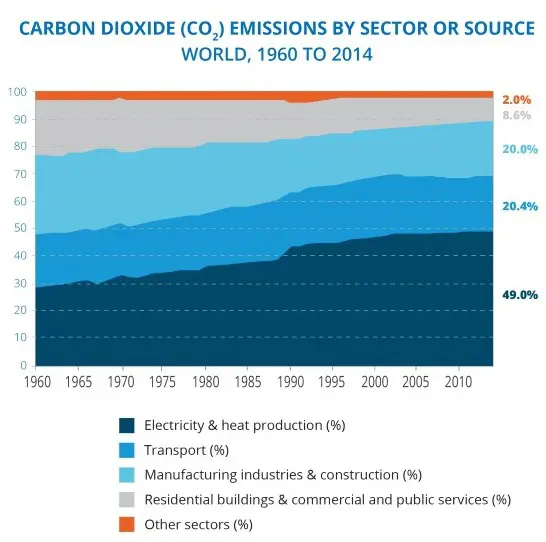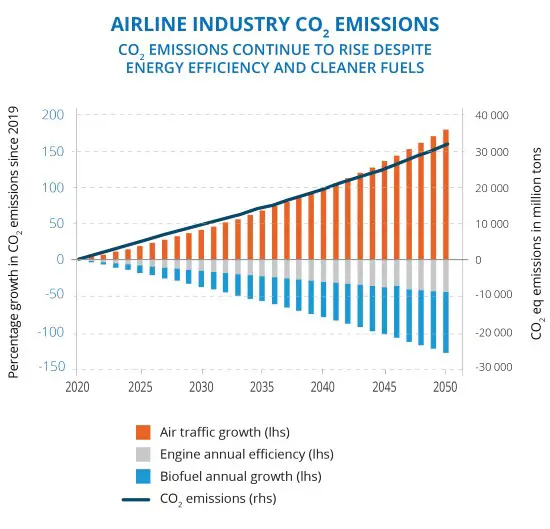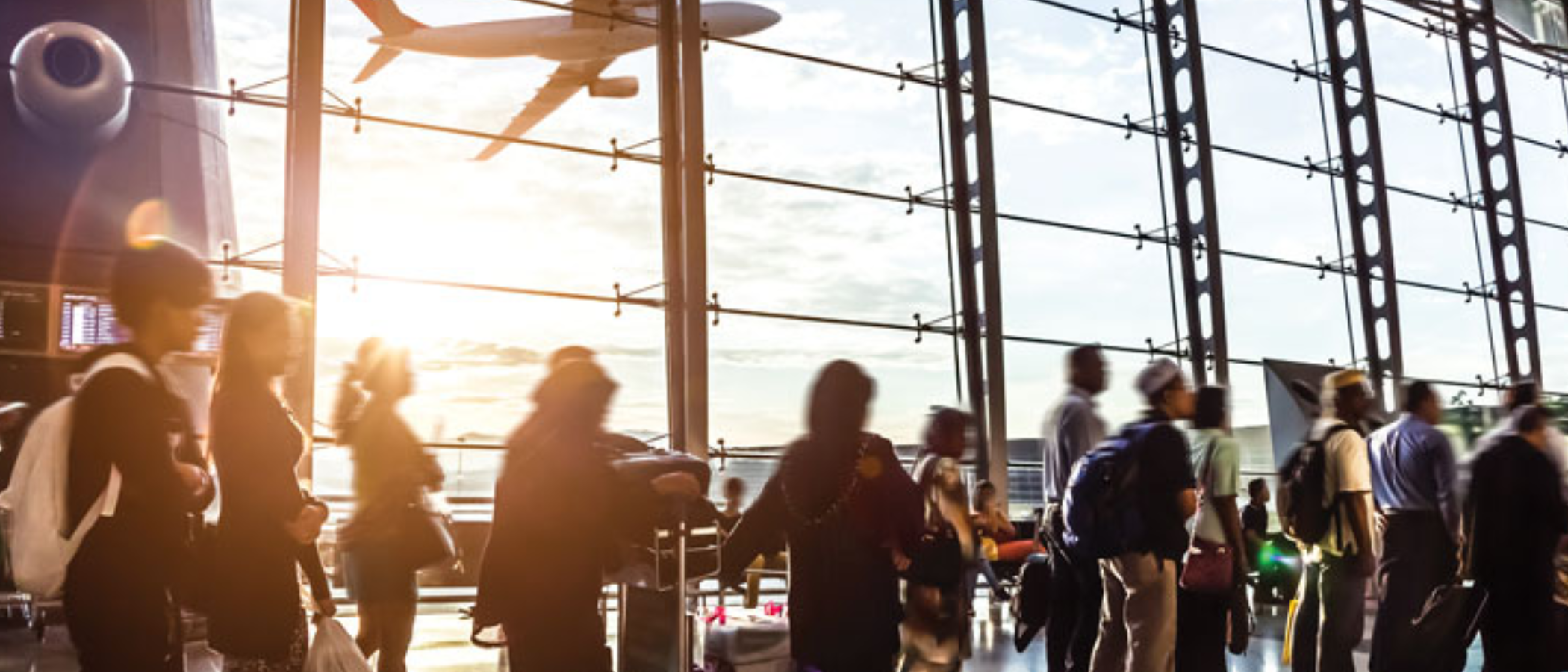The Covid-19 crisis creates a once-in-a-generation window of political opportunity to tackle other global issues with bold and far-reaching measures. As airlines line up to receive state aid, governments should take the opportunity to ensure the survival of airlines is balanced against their impact on climate change.
Suggestions to make financial support for airlines conditional on reductions in greenhouse gas emissions (GHGs) have come from many quarters, including the European governments. In late April, the French government linked support for Air France-KLM to climate goals. French finance minister Bruno Le Maire stated, “Air France must become the most environmentally-friendly airline on the planet”. The Dutch and Austrian governments are also expected to condition airline support on emissions progress. At the same time, the US government did not impose any conditions.
Airlines are under tremendous pressure from the pandemic, many effectively ceasing to operate for the first time since September 2001 and for the longest period in the history of civil aviation. Many require financial support to remain going concerns. Governments around the world are providing state aid or even (re)-nationalizing airlines; eg, Italy. It is estimated that just in Europe, the air transport sector accounts for at least 1.9 million direct jobs.[1]
Chart 1 -- CO2 by largest contributors

Source: International Energy Association[2]
Grounded!
Analysts estimate that the Covid19 crisis will result in a 5% drop in global CO2 emissions in 2020, relative to last year[3]. It will be the first annual drop in CO2 emissions since 2009 and the most significant annual decrease since 1950[4]. Sadly, this decrease is not structural; it is entirely the result of political decisions around the world to suspend economic activity to slow the spread of the Covid19 virus.
Air transportation contributed at least 2.5% of global CO2 emissions in 2019.[5] This figure is merely emissions from aircraft engines measured at ground level; recent studies warn that aircraft contrails at cruising altitude could double the global warming impact.[6]
Airline CO2 emissions have grown from 700 million tons CO2 equivalent in 2010 to 900 million tons in 2018[7], a 29% increase (2.9% annualized). Over the same period, passengers rose 51% (4.7% annualized). Energy efficiency of around 3% annually allowed emissions to grow less rapidly. However, experts agree that this pace of energy efficiency gains is unlikely over the foreseeable future, forecasting instead only 1% annually going forward. IATA forecasts 3.5% annual growth in air passengers over the next two decades.[8] Such continued rapid growth in passengers would likely result in continued growth in airline industry CO2 emissions.
A simple model of net CO2, that is, emissions expected from air passenger growth compared to reductions arising from future improvements in aircraft efficiency, demonstrates that much bolder measures are required for the sector to decarbonize.
Airline industry net CO2 emissions
CO2 emissions continue to rise despite energy efficiency and cleaner fuels

The dark blue line shows the cumulative CO2 emissions from airlines between 2020 and 2050, assuming a 3.5% annual growth in traffic. We assume that the growth in traffic will be partially compensated by improving aircraft efficiency (in green) as well as a progressive switch to bio kerosene, reaching 30% of aircraft fuel by 2050.[9]
Even under this rosy scenario, annual global air transport CO2 emissions would still be 50% higher in 2050 compared to their 2020 level. Cumulatively, airlines would release 33,000 million metric tons of CO2 equivalent, or 33 gigatons. For perspective, the IPCC estimates a global CO2 ‘budget’ limit of 570 gigatons through the year 2100 if we are to hold global warming below 1.5 degrees.[10]
What is the opportunity cost of rising aviation emissions? Are we comfortable spending close to 6% of our entire carbon budget on air transport? Bear in mind we have compared only the 2020-2050 airline emissions with the 2020-2100 carbon budget. This is pertinent question at a moment when the pandemic is forcing governments and society to weigh the relative costs and conditions of a wide range of elements. Job preservation is important, but it is not the only social impact, or we might rank, harvesting tobacco leaves by hand ahead of developing vaccines in terms of social utility. The aviation sector requires a profound re-evaluation about its place in society and how much of our collective limited carbon ‘budget’ it consumes.
The Wright Brothers give aviation a rethink
Technology will play a role. The 1% annual energy efficiency projection is realistic, given the greater gains already achieved over the last 20 years. The scenario also assumes that in 30 years, a third of jet fuel will be composed of Sustainable Aviation Fuels (SAF), developed from organic and renewable compounds sourced from algae, palm oil, sugarcane, beetroot, or others. Since 2008 over 150,000 flights have incorporated a small share of biofuel, still too early for widespread use. Biofuel currently costs more to produce than fossil kerosene. In a recent report the International Energy Agency estimates that SAF becomes competitive when oil is above $110 per barrel.[11] Other technologies are likely to be developed to drive energy efficiency.
We must also give aviation a rethink
It is painfully obvious that GHG emissions from aviation could dramatically increase even with gains in energy efficiency and a greater adoption of biofuels. We – governments, travellers, and investors – must give aviation a rethink. The airline sector has benefited from massive government support around the globe, including airport and other infrastructure investments and tax exemption on aviation fuels. Some of these investments could be redeployed to infrastructure for more GHG-efficient transportation.
Subsidies change incentives, economists tell us. Perhaps it is time to change the structure of the subsidies. The day when ‘flag carriers’ were a source of national pride is essentially over.
Airplane journeys should be discouraged where an alternative exists. There is no rational argument for expending 170kg of CO2 to fly roundtrip from Paris to Marseille when the same journey can be made by train at a CO2 ‘’cost’ of 6kg.[12] The almost 30-fold increase in environmental damage from flying is not compensated by a 30-fold increase in pleasure, convenience, or time savings. In power generation, it is widely agreed that if renewable energy sources can replace brown coal to produce the same energy, albeit after significant investments, then coal should be phased out. Similar logic demands that we analyse whether investments in rail networks and other alternatives should partially replace air traffic.
More fundamentally, the underlying societal purpose of airlines needs to be re-examined. The ‘raison d’être’ for air travel is to allow people and goods to travel over distances that would otherwise take days, or even weeks. The deregulation of the sector in the early 1980’s, combined with the emergence of a global middle class, has meant that hundreds of millions of people are now using high-carbon means of transportation. The environmental cost must be correctly priced into airlines.
Bluntly stated, flying is too cheap. Air travellers do not yet pay for the cost of their emissions. A European citizen flying from London to New York roundtrip emits as much CO2 over his 12 hours of flying (2.4 tons)[13] as a family car will over an entire year[14]. This one roundtrip flight is roughly the total GHG ‘budget’ for each European for the year 2030, to meet the 2 degrees global warming goal.
It would be foolish to believe that a return to the pre-Covid air passenger growth could be compatible with averting the worst consequences of climate change. Thanks to technological innovation, aviation will continue to lower its environmental impact. Sustainable fuels from renewable sources will help. Thanks to the work by the IPCC, we know how much CO2 can still safely be emitted into the atmosphere. Investors have a responsibility to ensure that through their capital allocation decisions, this finite CO2 budget is spent to both maximize investor return, and to maximize the return for all stakeholders. Governments and citizens must play their part. Governments must create incentives and channel public funds towards low-carbon transportation infrastructure. They can make it easier for citizens to understand the impact of their travel decisions and help citizens adapt their consumption decisions accordingly. Low-carbon leisure and travel solutions are already available and will benefit from this shift in behaviour.
[1] https://ec.europa.eu/transport/sites/transport/files/modes/air/studies/doc/2015-10-employment-and-working-conditions-in-air-transport-and-airports.pdf
[2] https://ourworldindata.org/grapher/carbon-dioxide-co2-emissions-by-sector-or-source
[3] https://www.carbonbrief.org/analysis-coronavirus-set-to-cause-largest-ever-annual-fall-in-co2-emissions
[4] https://ourworldindata.org/co2-and-other-greenhouse-gas-emissions
[5] https://www.iea.org/reports/tracking-transport-2019
[6] https://e360.yale.edu/features/how-airplane-contrails-are-helping-make-the-planet-warmer
[7] https://www.iea.org/reports/tracking-transport-2019
[8] https://www.iata.org/en/pressroom/pr/2018-10-24-02/
[9] https://www.connaissancedesenergies.org/fiche-pedagogique/biokerosene
[10] https://www.wri.org/blog/2018/10/according-new-ipcc-report-world-track-exceed-its-carbon-budget-12-years
[11] https://www.iea.org/commentaries/are-aviation-biofuels-ready-for-take-off
[12] https://www.icao.int/environmental-protection/Carbonoffset/Pages/default.aspx
[13] https://www.greentripper.org//default.aspx?cl=en
[14] Assuming 15,000km travelled per year
